What's the best time for a summer holiday in Sweden, Finland or Norway?
The main period for summer holidays in the Nordic countries is late June to mid-August. This is when most locals will take their summer vacations. But May to mid-June and mid-August to late September are also wonderful and very quiet times for an outdoor adventure.
Anytime during the summer period can be a wonderful time for canoeing, kayaking, packrafting, hiking, a multi-activity adventure or a log cabin stay.
See also:
- When to go canoeing
- When to go kayaking
- When to go hiking
- When to go for a Summer Active Accommodation holiday
What's the best time for a winter holiday in Sweden, Finland or Norway?
The best time to travel for a winter holiday depends on the activity:
- Dog Sledding: Dog sledding is possible throughout the winter season, from mid-November to early May, and each part of the winter has its own special atmosphere. Dogsled tours taking place in the mountains or featuring winter camping will normally take place during the "spring winter" in March and April, though may also be possible earlier in the winter.
- Cross Country Skiing: February to mid-April is the most popular period for cross country skiing on prepared tracks.
- Backcountry Skiing: Backcountry ski tours often have an expedition element and are possible from December to April.
- Alpine Ski Touring: The "spring winter" in March and April is the season for alpine peak touring, with long hours of daylight and typically milder temperatures.
- Snowshoeing: Possible throughout the winter from December to April.
- Ice Skating: The best months for ice skating on natural ice are January and February, with tours sometimes possible into early March if ice conditions are good.
- Winter Multi-activity and Winter Active Accommodation: Stays at our winter accommodation and multi-activity experiences are possible throughout the winter, from December to April.
See also:
January
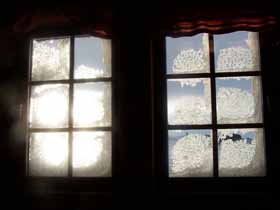
Photo: Nature Travels
January in Sweden, Norway and Finland is the heart of winter, with snow lying thick on the ground across much of the region and temperatures typically at their lowest. The snow cover and of course the Northern Lights in the far north brightens even the darkest day, and there is nothing nicer than to come out of the cold to warm yourself next to a roaring log fire!
January is a popular month for dog sledding adventures, natural ice skating, a backcountry ski tour or a winter cabin or lodge-based break.
February
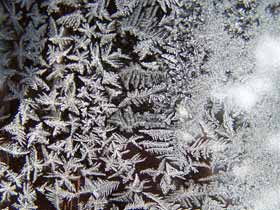
Photo: Nature Travels
February offers a wide range of possibilities for winter holidays in the Nordic countries, from dog sledding to snowshoeing. The days are lengthening and weather conditions tend to be cold and stable. This is a good time of year to see the spectacular displays of the Northern Lights, the Aurora Borealis, in the night sky.
February is an ideal month for exploring the frozen lakes and forests of the lowlands and from around mid-February onwards, conditions also become suitable for winter activities in the mountains. Take on a challenging expedition driving your own husky team on a dog sledding tour or discover the unique freedom of natural ice skating. This is the most popular month for a natural ice-skating tour in the Stockholm area in Sweden, with good ice cover both on the archipelago waters and inland lakes.
March
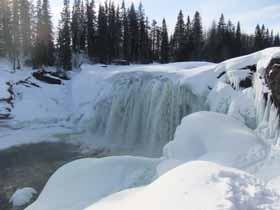
Photo: Nature Travels
March is the beginning of "Spring Winter" in the mountains, with longer, warmer days and bright sunshine. A winter holiday at this time of year can combine the best of both seasons, with snow cover still thick on the ground across much of the Nordic region but the taste of spring in the air.
March is a wonderful time for ski touring or dog sledding, with the added warmth and extended daylight making it possible to be out in the hills for longer. March is also a good time to see the Northern Lights, with dark, crisp nights.
April
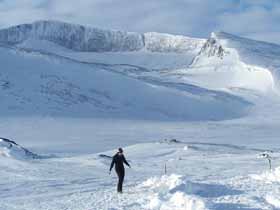
Photo: Nature Travels
April is a month of contrasts in the north. In the lowlands, the snows are beginning to melt and there are signs of spring, but there is still plenty of snow for dog sledding and skiing. The warmer temperatures make it possible to combine snowsports with winter camping - a real wilderness experience!
The Northern Lights can be seen up until around mid-April in the far north, after which the nights are becoming too light.
In the south of the country, "tussilago", the first of the spring flowers, are visible in the clear patches between the snow. There is still a chill in the air and the lakes may still be frozen, but the promise of new life everywhere shows that spring is just around the corner.
May
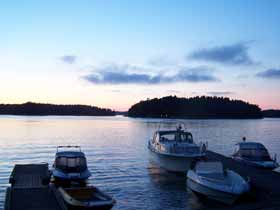
Photo: Nature Travels
By May, spring has truly arrived in the lowlands, with meadows carpeted with thousands of flowers pushing up through the softening earth and lengthening, warm days. But in the lakes and rivers, it's still cold enough that only the brave will chance a dip! And temperatures can still be very chilly at night when camping.
Up on the mountain plains, the last of the winter snows make early May an ideal time for winter camping, and the snow cover is still ample for dog sledding tours in the warm spring sunshine. At lower altitudes, it is time to start exploring the forests and go in search of some of Sweden's most spectacular wildlife. The season for some of our self-guided canoe tours begins in May.
June
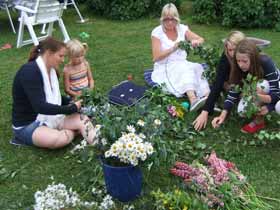
Photo: Nature Travels
June days are long and an ideal time for exploring. It is the month of Midsummer in Sweden, an important celebration in the Swedish calendar and the longest day of the year. In the far north, June is a time of endless daylight with Midnight Sun, and there are flowers everywhere.
June is an excellent month for kayaking through the quiet waters of the archipelago, a log cabin holiday deep in the forest, or a canoe tour on lakes and rivers camping wild along the way.
July
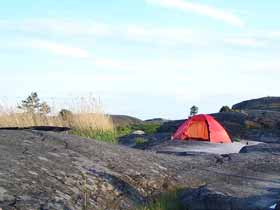
Photo: Nature Travels
July is height of the Nordic summer. The lakes and archipelago waters become warm enough for longer swimming sessions and it is an ideal time to venture out into the mountains and forests.
July offers a wealth of possibilities out on the water, from canoeing to sea kayaking to timber rafting, and is a popular month for hiking in the far north.
August
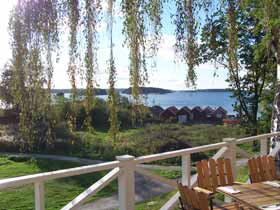
Photo: Nature Travels
For the locals, August is the time to make the most of the last long, warm days of summer before children return to school and in the north, later August brings the start of autumn. It is also the time for crayfish parties, an important cultural event in the Swedish calendar.
From kayaking and canoeing to packrafting and hiking, August is a wonderful month to be out in the wilds, with the waters still warm for a dip at the end of your day's adventures!
September
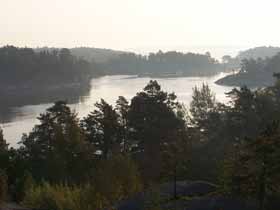
Photo: Nature Travels
In the northern parts Sweden, Norway and Finland, the trees are turning and autumn is well on its way. Around Stockholm, September may bring continuing days of summer warmth or the beginning of the autumn changes.
September is the last part of the canoeing and kayaking season, with the countryside and archipelagos exceptionally quiet and peaceful during this time. It is also a lovely month to take in the autumn colours on a hiking tour, or to rent a log cabin by a lake and go looking for mushrooms. Fishing is also very good in many areas at this time.
In the far north, the nights are also now dark enough for displays of the Northern Lights, and the first snowfalls may come in the mountains.
October
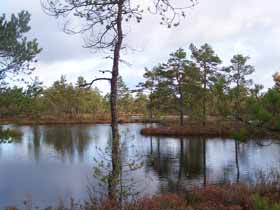
Photo: Nature Travels
By October the blazing colours of autumn are starting to give way to the first signs of winter, with clear, crisp days and morning mist on the lakes.
October is one of the quietest months for visitors to the Nordic countries. Possibilities for outdoor activities will depend on weather conditions and the area you are visiting, but October can be a good time for a quiet, relaxing getaway in one of our log cabin experiences.
Alternatively, for an active break, considering joining the huskies for their pre-season training as they prepare for the winter ahead!
November
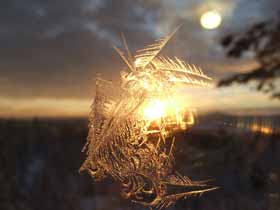
Photo: Nature Travels
By November, there are definite signs of winter. Northern areas may already have good snow cover by this time and the season for dog sledding in the far north begins around mid-November. The nights are dark and the Northern Lights can be seen. Further south, the snows may come and go before settling in properly for the winter and the lakes will begin to freeze. Sustained low temperatures are ideal before the first snowfalls, making the ground cold and hard.
Long walks in the quiet forests followed by warming drinks around a roaring log fire are a marvellous way to spend a November day further south!
December
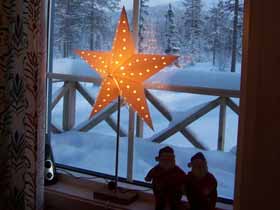
Photo: Nature Travels
December is the deep midwinter, when hours of daylight are shortest and the northern regions have a wonderful blue quality to the light.
The lead-up to Christmas is a magical period. With dark days lit by the glow of the snow and candles in every window, it is a welcoming and cosy month, punctuated in Sweden by the lovely Santa Lucia processions on the 13th.
There are a number of possibilities for those wishing to spend Christmas or New Year in the Nordic countries, from dog sledding in Lapland to a romantic winter log cabin break. God Jul och Gott Nytt År! (for the Swedes), God Jul og Godt Nyttår (for the Norwegians) or Hyvää Joulua (for the Finns)!



